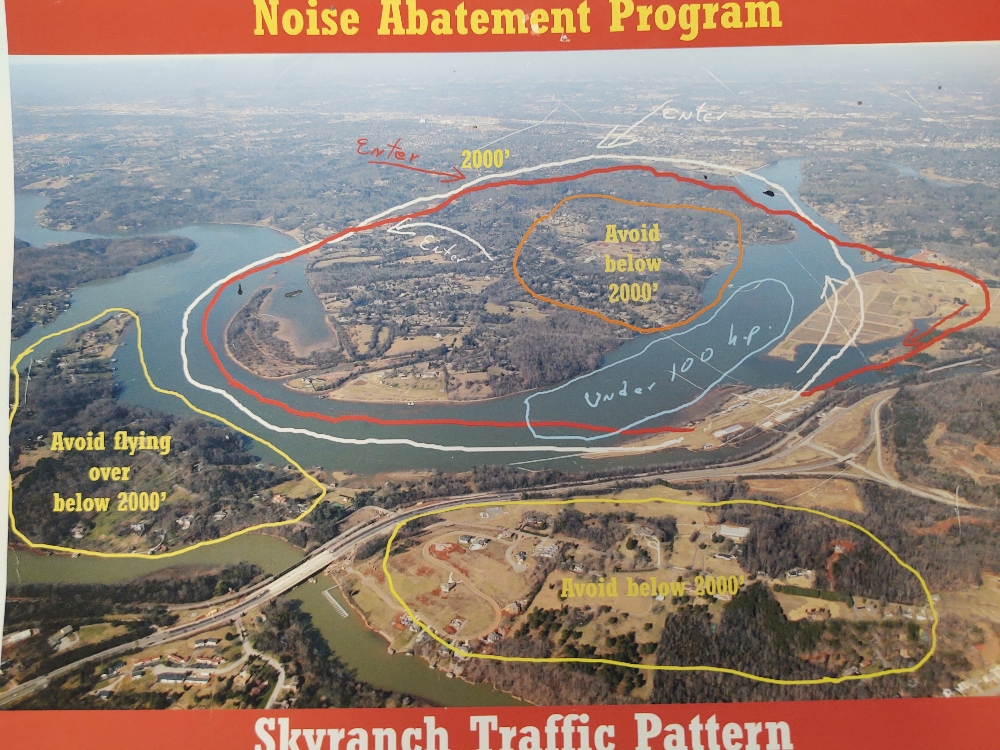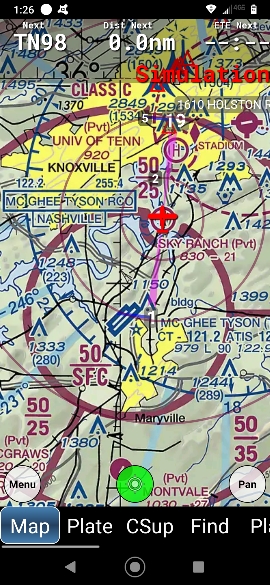CharlieD3
En-Route
Interesting discussion here:
https://airfactsjournal.com/2021/07...tent=How+To+Prevent+Loss+Of+Control+Accidents
Interesting to me because of the nature of the pattern at my home 'drome. (See below.)
When I was trying to get current after 20 odd years, that pattern drove me nuts. I began to believe I could fly okay but would never be able to land... I told my CFII I needed to try this at an airport with a standard pattern... We shot some touch and goes and then went back to SkyRanch.
Every approach to the north runway is kind of an overshoot of a typical base to final turn... You (more or less) have to stay over the river... Or, bust the Charlie airspace of TYS. (See the screenshot from Avare).
Some of that flying leaks over to my pattern at normal airports some times. I'm a bit more lax if there's no traffic about and continue to land. If there's traffic, I make as precise a pattern as I can.
I think the notion that you're screwed if you overshoot is a shame. As the article suggests, it's just a matter of small adjustments or a go around if you can't correct. You normally wouldn't be 100% "landing configured" (full flaps, throttle idle) unless you had the runway made anyway.
Go around is fine... I've done it often. But if you can correct, why not?
Discussion?


https://airfactsjournal.com/2021/07...tent=How+To+Prevent+Loss+Of+Control+Accidents
Interesting to me because of the nature of the pattern at my home 'drome. (See below.)
When I was trying to get current after 20 odd years, that pattern drove me nuts. I began to believe I could fly okay but would never be able to land... I told my CFII I needed to try this at an airport with a standard pattern... We shot some touch and goes and then went back to SkyRanch.
Every approach to the north runway is kind of an overshoot of a typical base to final turn... You (more or less) have to stay over the river... Or, bust the Charlie airspace of TYS. (See the screenshot from Avare).
Some of that flying leaks over to my pattern at normal airports some times. I'm a bit more lax if there's no traffic about and continue to land. If there's traffic, I make as precise a pattern as I can.
I think the notion that you're screwed if you overshoot is a shame. As the article suggests, it's just a matter of small adjustments or a go around if you can't correct. You normally wouldn't be 100% "landing configured" (full flaps, throttle idle) unless you had the runway made anyway.
Go around is fine... I've done it often. But if you can correct, why not?
Discussion?


Last edited:


